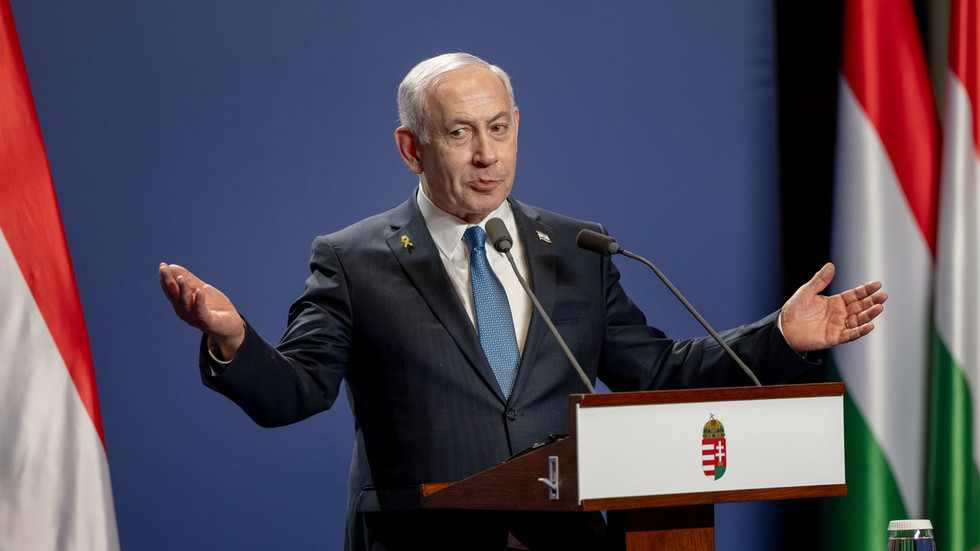The U.S. State Department has approved the potential sale of 20 F-16C/D Block 70/72 fighters to the Philippines, the latest turn in a long-running saga as Manila seeks to revamp its air force. The announcement comes as the United States reinforces military ties with the Southeast Asian country, with a recent visit there by U.S. Defense Secretary Pete Hegseth and the forthcoming deployment of U.S. anti-ship and land-attack missile systems for a military drill.
The approved Foreign Military Sale package, which has an estimated cost of $5.58 billion, covers 16 single-seat F-16C and four two-seat F-16D versions. As well as the aircraft and engines, the package includes AN/APG-83 Scalable Agile Beam Radars (SABR), AN/AAQ-33 Sniper advanced targeting pods, AN/ALQ-254 Viper Shield electronic warfare or equivalent systems, Scorpion Hybrid Optical-based Inertial Trackers (HObIT) or Joint Helmet-Mounted Cueing Systems II (JHMCS II) helmet-mounted displays, and undisclosed infrared search and track (IRST) systems.
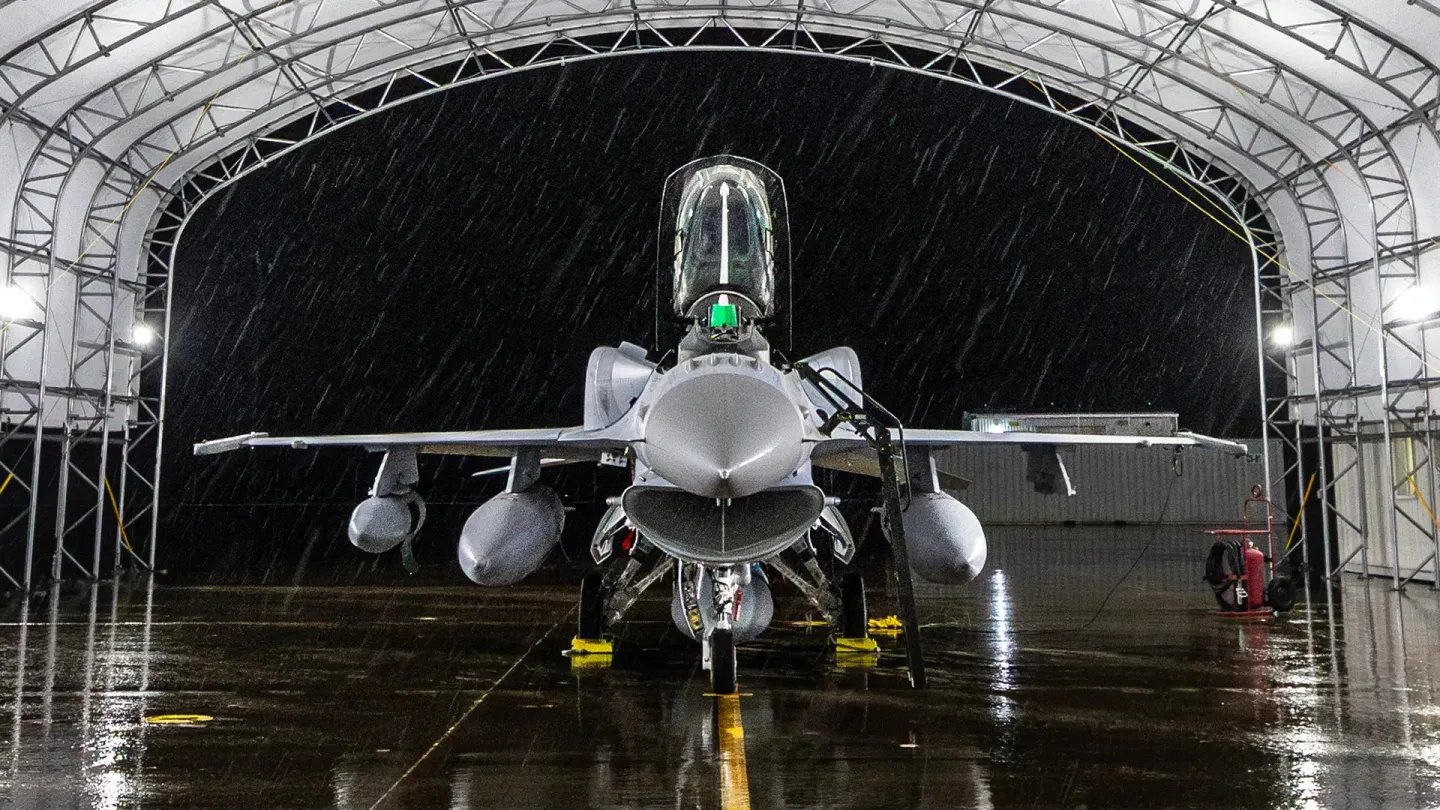 A Block 70 F-16. Lockheed Martin
A Block 70 F-16. Lockheed MartinThe IRST system could be a version of Lockheed Martin’s Legion, a pod-mounted sensor that is also offered in miniaturized form for the F-16 Block 70/72 as the Legion-Embedded System (ES). Legion pods are fitted on the left underside of the forward fuselage, on the chin hardpoint. An alternative could be the Northrop Grumman OpenPod, a modular, open-architecture design, equipped with Leonardo’s SkyWard IRST sensor. This pod might be more likely for export to the Philippines and is notably already used Top Aces, a private adversary air company. An IRST of any kind is especially useful as an additional way of detecting and tracking other aircraft at long ranges, including ones that employ stealth technology to hide from radar. The pod can also provide targeting information so the pilot can engage an enemy passively, without emitting any electromagnetic energy. You can read more about the capabilities that the Legion pod offers here.
Air-to-air weapons are set to be provided in the form of up to 112 AIM-120C-8 Advanced Medium-Range Air-to-Air Missiles (AMRAAMs) and 40 AIM-9X Block II Sidewinder infrared-guided air-to-air missiles. Offensive weapons in the package comprise 36 GBU-39/B Small Diameter Bombs (SDB), 60 Mk 82 500-pound general-purpose bombs, 60 Mk 84 2,000-pound general-purpose bombs, 30 Joint Direct Attack Munition (JDAM) tail kits for the GBU-38 or GBU-54 Laser JDAM, and 30 kits for GBU-50 Enhanced Paveway II precision-guided bombs. Overall, the total number of munitions included is relatively tiny, for a deal of this kind.
At this point, it’s worth noting that the State Department announcement is not final. The quantities of aircraft and other equipment and the costs involved could all change. Potentially, lawmakers could also move to block the deal within the next 30 days, although that is unlikely.
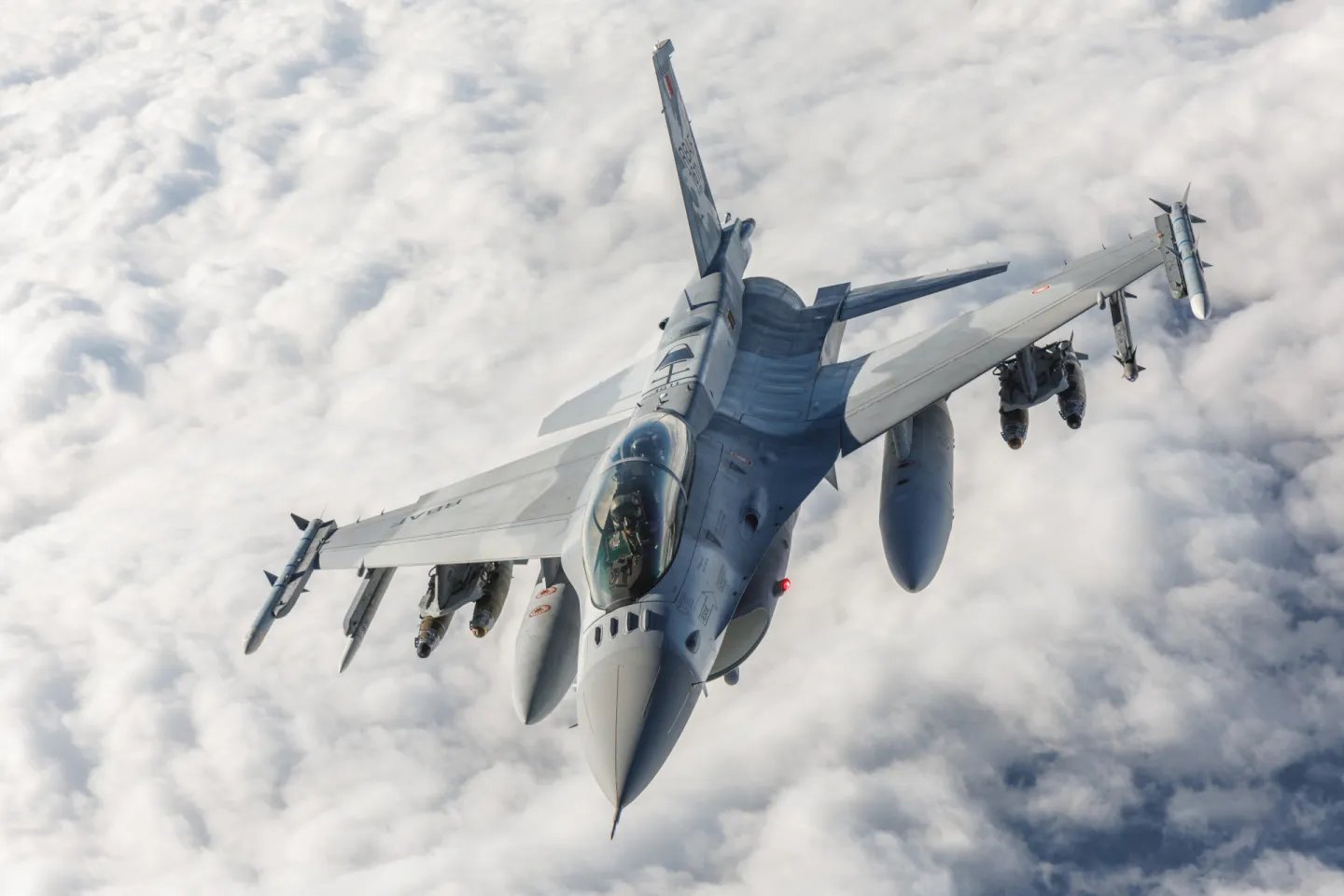 A fully armed Block 70 F-16D of the Royal Bahraini Air Force. Bahrain was the first customer to receive the Block 70/72 series jets. U.S Air Force
A fully armed Block 70 F-16D of the Royal Bahraini Air Force. Bahrain was the first customer to receive the Block 70/72 series jets. U.S Air Force “The proposed sale will enhance the Philippine Air Force’s ability to conduct maritime domain awareness and close air support missions and enhance its suppression of enemy air defenses (SEAD) and aerial interdiction capabilities,” the U.S. State Department said in a statement. “This sale will also increase the ability of the Armed Forces of the Philippines to protect vital interests and territory, as well as expand interoperability with the U.S. forces. The Philippines will have no difficulty absorbing this equipment into its armed forces.”
Previously, back in 2021, the Philippines had been approved for another F-16 Block 70/72 sale, this time involving 10 F-16Cs and two F-16Ds, valued at a total of $2.43 billion. In the event, the Philippines didn’t proceed with that deal, having only allocated $1.1 billion for the acquisition.
Notably, that earlier package didn’t include IRST systems, but the Philippines was approved to buy 12 AGM-84L-1 Harpoon Block II anti-ship missiles.
The Philippine Air Force retired its veteran fleet of Northrop F-5A/B Freedom Fighters in 2005. As long ago as the 1990s, efforts were being made to introduce new fighters, but so far the only new jets for the service have been 12 Korea Aerospace Industries (KAI) FA-50PH light combat jets acquired from Seoul. One of those has since crashed.
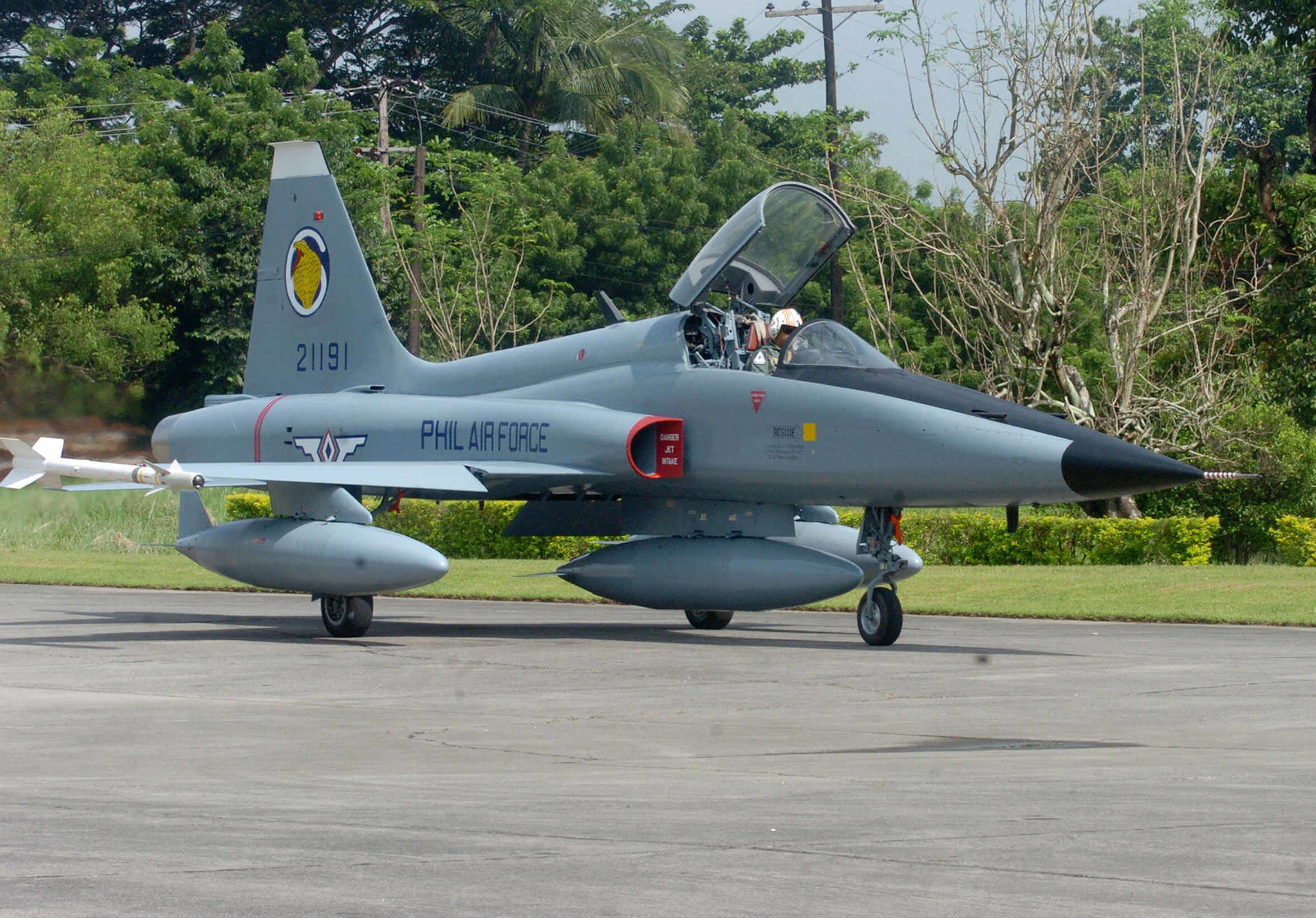 A Philippine Air Force F-5A fighter taxis to its hangar at Basa Air Base before being formally decommissioned on October 1, 2005. JAY DIRECTO/AFP via Getty Images JAY DIRECTO
A Philippine Air Force F-5A fighter taxis to its hangar at Basa Air Base before being formally decommissioned on October 1, 2005. JAY DIRECTO/AFP via Getty Images JAY DIRECTO An FA-50PH performs a flypast at Clark Air Base in Angeles City, Pampanga province, north of Manila on November 28, 2015. TED ALJIBE/AFP via Getty Images TED ALJIBE
An FA-50PH performs a flypast at Clark Air Base in Angeles City, Pampanga province, north of Manila on November 28, 2015. TED ALJIBE/AFP via Getty Images TED ALJIBEThe Philippine Air Force’s combat fleet also includes six Embraer A-29B Super Tucano turboprop light attack aircraft.
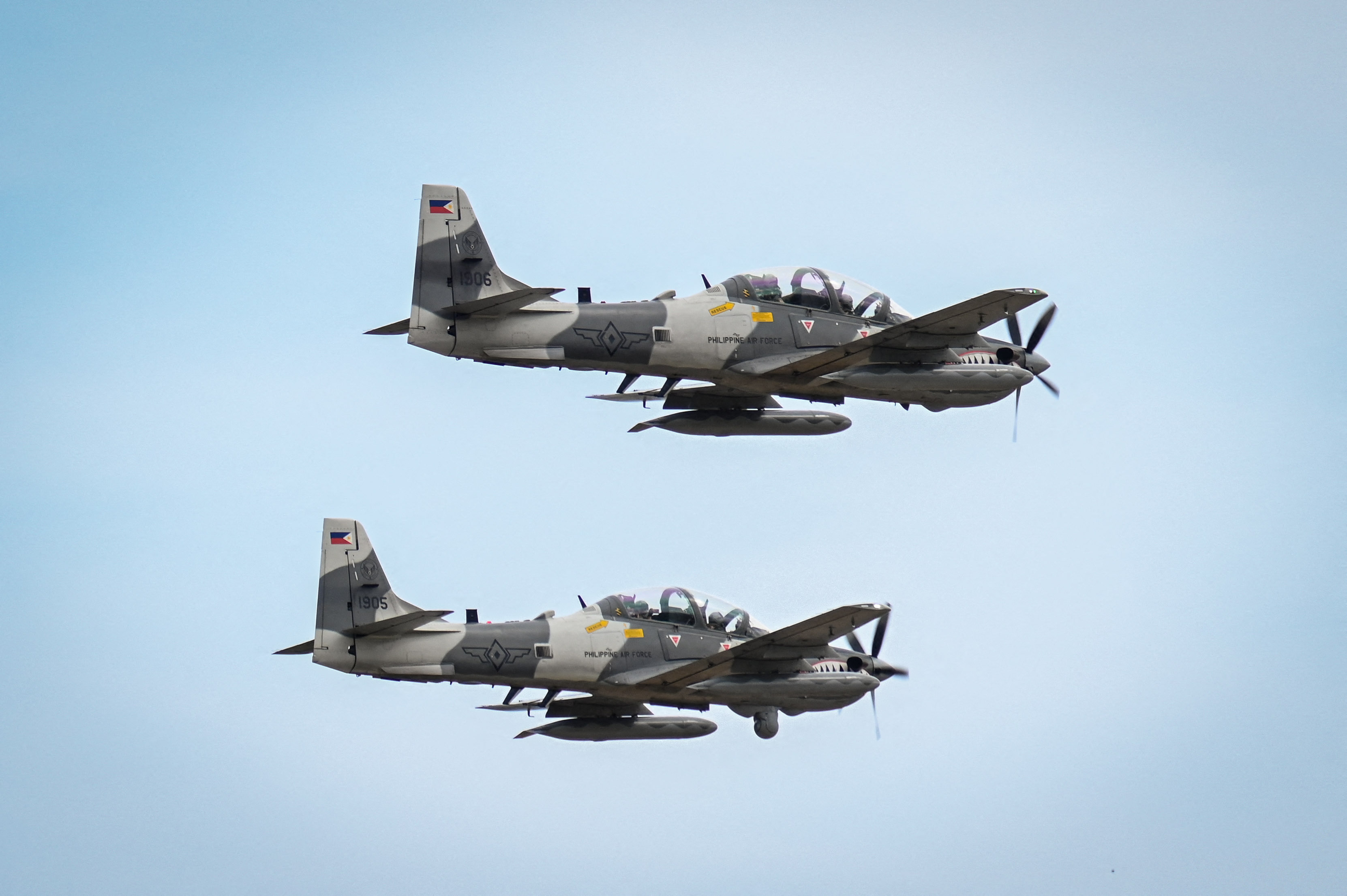 Philippine Air Force Super Tucano light attack aircraft fly by during an airfield seizure exercise as part of the US-Philippines Balikatan joint military exercise at San Vicente Airport in Palawan on May 1, 2024. (Photo by JAM STA ROSA / AFP) JAM STA ROSA
Philippine Air Force Super Tucano light attack aircraft fly by during an airfield seizure exercise as part of the US-Philippines Balikatan joint military exercise at San Vicente Airport in Palawan on May 1, 2024. (Photo by JAM STA ROSA / AFP) JAM STA ROSACompared to anything else in the inventory, the F-16 represents a huge advance in capability, not just in terms of performance, but also in the advanced sensors and precision-guided weaponry it will carry. Currently, for example, the Philippine Air Force doesn’t have any aircraft armed with beyond-visual-range missiles. These, combined with an active electronically scanned array (AESA) radar, will represent a step-change in terms of air-to-air capabilities alone.
Last year, the Philippine Secretary of National Defense, Gilberto Teodoro, outlined plans to buy 40 fighter jets as part of a major military modernization effort. Known as Horizon 3, the fighter acquisition would be worth $33.6 billion over the next 10 years, provided it’s fully approved.
 U.S. Secretary of Defense Pete Hegseth (left) and the Philippine Secretary of National Defense Gilberto Teodoro speak after a joint press conference following their meeting at Camp Aguinaldo in Manila on March 28, 2025. Photo by Ted ALJIBE / AFP TED ALJIBE
U.S. Secretary of Defense Pete Hegseth (left) and the Philippine Secretary of National Defense Gilberto Teodoro speak after a joint press conference following their meeting at Camp Aguinaldo in Manila on March 28, 2025. Photo by Ted ALJIBE / AFP TED ALJIBEHowever realistic that plan, it’s clear that Manila is set on rebuilding its armed forces to better face off against the growing Chinese threat in the region.
Reflecting the increasing strategic significance that Washington is assigning to the Philippines, U.S. Defense Secretary Pete Hegseth visited the archipelago nation last week, as part of a wider Indo-Pacific trip.
“It’s a strong message to China on solid bilateral relations” between the U.S. and the Philippines,” Philippine Ambassador to the U.S. Jose Manuel Romualdez told The Associated Press, ahead of Hegseth’s visit.
On the agenda were joint measures that can be taken to enhance deterrence against Chinese aggression in the disputed South China Sea, almost the entirety of which is claimed by China. The Philippines is one of several regional nations that also have overlapping claims on these highly strategic waters.
Romualdez also highlighted the possibility of “more significant support” from the United States in this regard.
U.S. defense policy in relation to the Philippines has become a more important topic in the last couple of years, as confrontations between Chinese and Philippine coast guard and naval forces in the South China Sea have become increasingly tense.
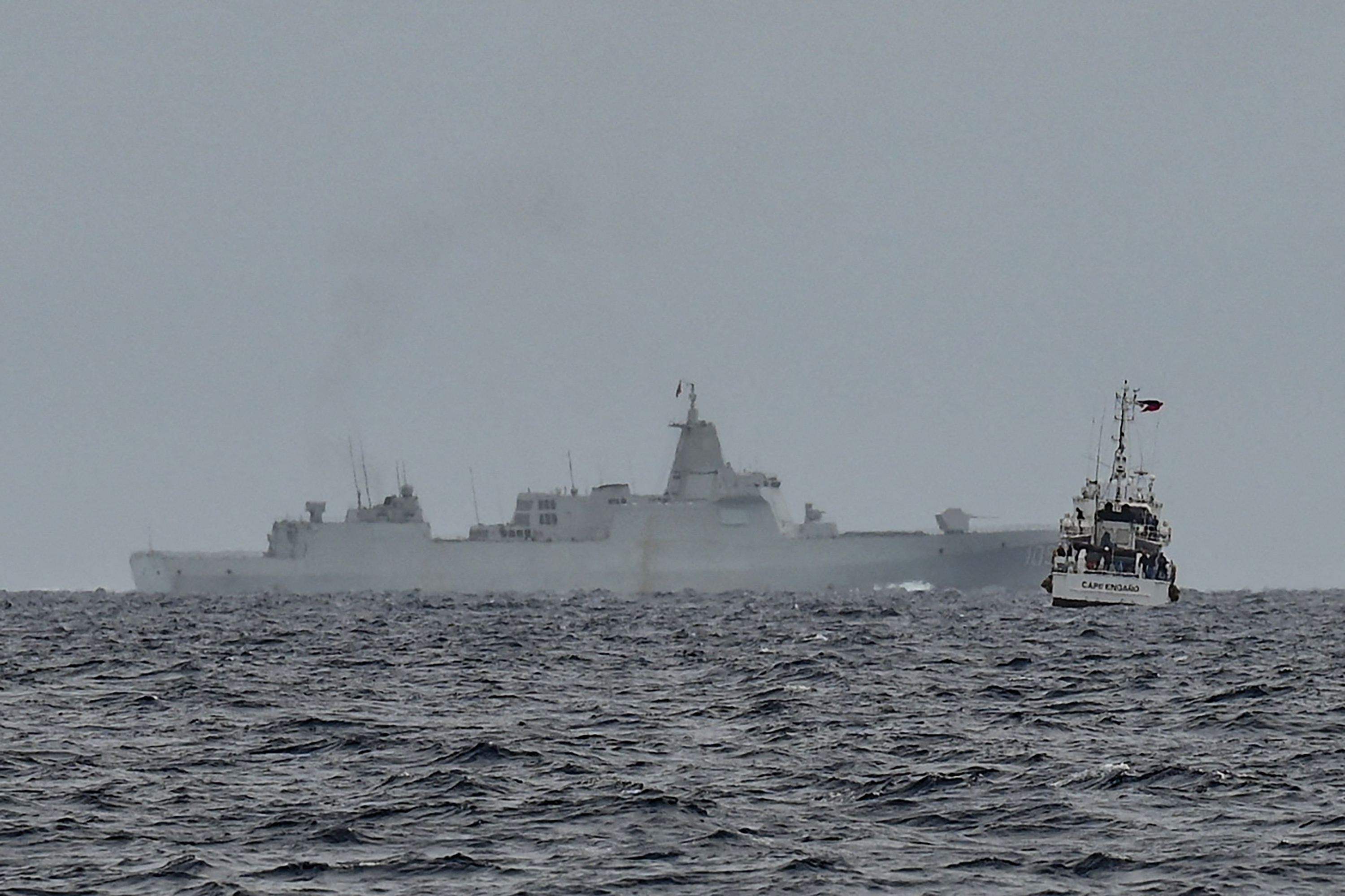 A People’s Liberation Army (PLAN) warship shadows the Philippine Coast Guard ship BRP Cape Engano, during a supply mission to Sabina Shoal in disputed waters of the South China Sea on August 26, 2024. Photo by JAM STA ROSA / AFP JAM STA ROSA; JAM STA ROSA
A People’s Liberation Army (PLAN) warship shadows the Philippine Coast Guard ship BRP Cape Engano, during a supply mission to Sabina Shoal in disputed waters of the South China Sea on August 26, 2024. Photo by JAM STA ROSA / AFP JAM STA ROSA; JAM STA ROSAIn response to clashes between Chinese and Philippine forces in these waters, the previous Biden administration issued repeated warnings to Beijing. These included the fact that the United States is obliged to help defend the Philippines if its ships or aircraft come under armed attack anywhere in the wider region.
Such statements from Washington prompt predictably hostile reactions from Beijing, but currently, it seems, the defense relationship between the United States and the Philippines is only set to be reinforced.
In addition to the possible sale of F-16s, which would mark a significant advance in capabilities for the Philippine Air Force, Manila’s armed forces are also deeply involved in joint exercises with those of the United States and other allies.
The most significant of these drills is the Balikatan exercise, the 2025 edition of which kicks off later this month and which also features forces from Australia and Japan.
 U.S. Marines with 3d Reconnaissance Battalion, 3d Marine Division, and Philippine Marines with Force Reconnaissance Group, conduct a raid rehearsal during the Balikatan exercise in 2022. U.S. Marine Corps photo by Cpl. Jackson Dukes Cpl. Jackson Dukes
U.S. Marines with 3d Reconnaissance Battalion, 3d Marine Division, and Philippine Marines with Force Reconnaissance Group, conduct a raid rehearsal during the Balikatan exercise in 2022. U.S. Marine Corps photo by Cpl. Jackson Dukes Cpl. Jackson DukesThe 2025 exercise is especially notable since it will feature two recently inducted types of U.S. missile systems.
While the U.S. Army has said it will not conduct live-fire drills of its Typhon in Exercise Balikatan, the deployment of the system to the Philippines is already a big deal and one that has been criticized by China. Typhon was first deployed to the Philippines during last year’s Exercise Salaknib and has remained in the country since then.
Typhon can fire Tomahawk cruise missiles and SM-6 multi-purpose missiles. The latest Tomahawk cruise missiles have land attack and anti-ship capabilities, while the SM-6 missiles are intended to be employed primarily against targets ashore and at sea, essentially as a short-range ballistic missile. The Army has also described it in the past as a “strategic” weapon system that would be used against higher-value targets like air defense assets and command and control nodes.
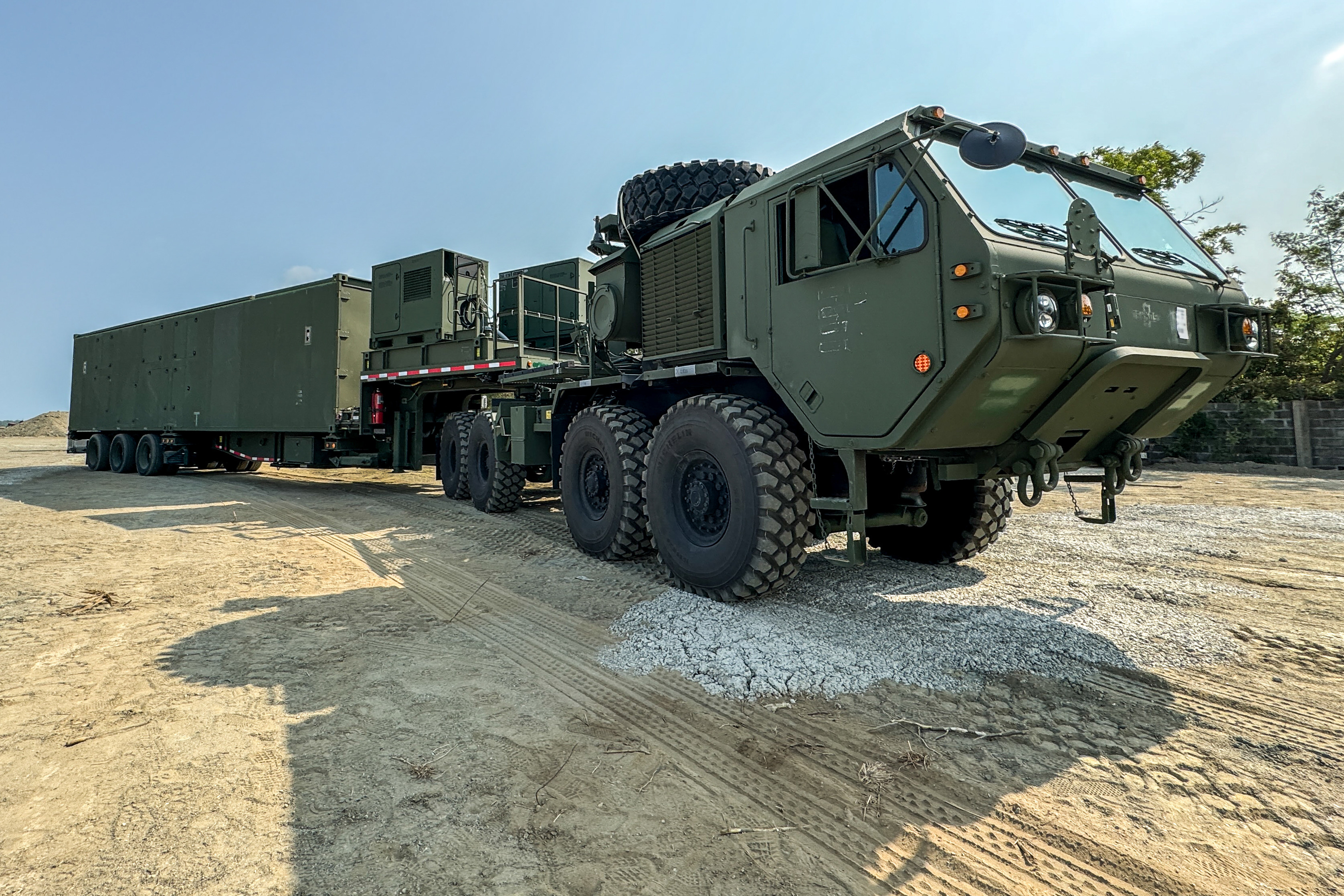 A Typhon launcher from Charlie Battery, 5th Battalion, 3rd Field Artillery Regiment, Long Range Fires Battalion, 1st Multi-Domain Task Force arrives as part of the capability’s first deployment into theater on Northern Luzon, Philippines, on April 8, 2024. U.S. Army/Capt. Ryan DeBooy
A Typhon launcher from Charlie Battery, 5th Battalion, 3rd Field Artillery Regiment, Long Range Fires Battalion, 1st Multi-Domain Task Force arrives as part of the capability’s first deployment into theater on Northern Luzon, Philippines, on April 8, 2024. U.S. Army/Capt. Ryan DeBooyWith Tomahawk’s range of roughly 1,000 miles, Typhon is highly relevant in this context. From a location in the middle of Northern Luzon in the Philippines, it has more than enough range to reach the southeastern corner of mainland China, as well as Hainan Island with its key naval and other bases. Chinese man-made outposts across the South China Sea would also be within range.
Meanwhile, Balikatan will see the U.S. Marine Corps deploy its Navy Marine Expeditionary Ship Interdiction System (NMESIS) anti-ship missile system for the first time operationally in the region. The complete NMESIS system consists of the uncrewed Joint Light Tactical Vehicle (JLTV), also known as the Remotely Operated Ground Unit Expeditionary-Fires (ROGUE-Fires), and a launcher with two ready-to-fire Naval Strike Missiles (NSM). The NSM is a stealthy anti-ship cruise missile with a secondary land-attack capability. The NSM is capable of hitting targets 115 miles away.
 A Navy Marine Expeditionary Ship Interdiction System (NMESIS) anti-ship missile system during trials at the Pacific Missile Range Facility Barking Sands, Hawaii, on August 16, 2021. U.S. Marine Corps photo by Maj. Nick Mannweiler Maj. Nicholas Mannweiler
A Navy Marine Expeditionary Ship Interdiction System (NMESIS) anti-ship missile system during trials at the Pacific Missile Range Facility Barking Sands, Hawaii, on August 16, 2021. U.S. Marine Corps photo by Maj. Nick Mannweiler Maj. Nicholas Mannweiler“The more security cooperation, the better,” U.S. Defense Secretary Hegseth reflected in a press conference with his Filipino counterpart, Gilberto Teodoro, last week. “The more strategic dilemmas for our adversaries, the better.”
The inclusion of Typhon and NMESIS in the upcoming Balikatan drills is a very visible indicator of this strategy. As the United States forges expanded defense ties with the Philippines, the likely transfer of F-16s is very much a logical next step.
Contact the author: [email protected]

 By The War Zone | Created at 2025-04-02 17:41:16 | Updated at 2025-04-03 15:41:30
22 hours ago
By The War Zone | Created at 2025-04-02 17:41:16 | Updated at 2025-04-03 15:41:30
22 hours ago


